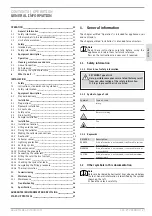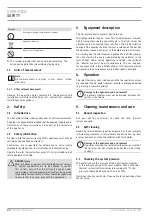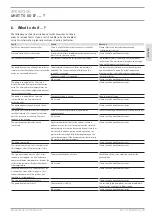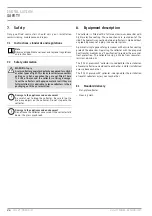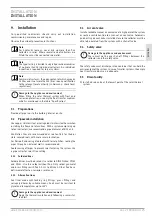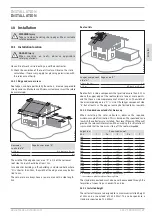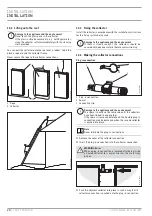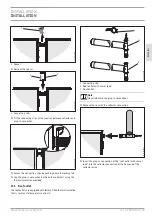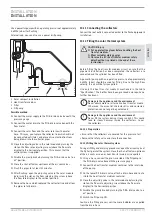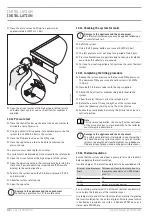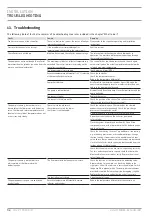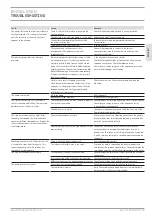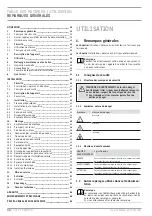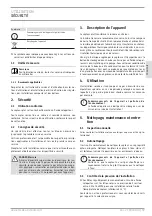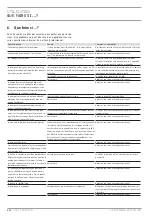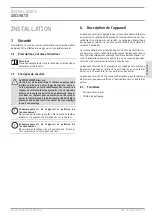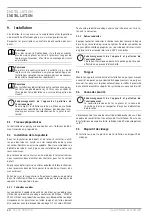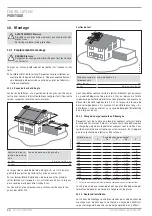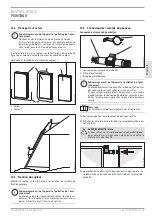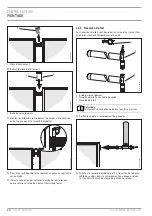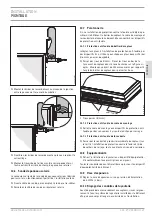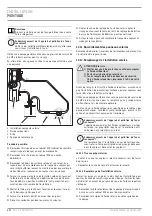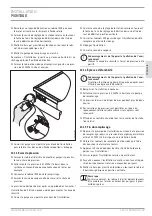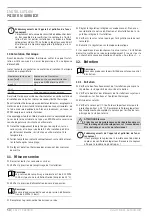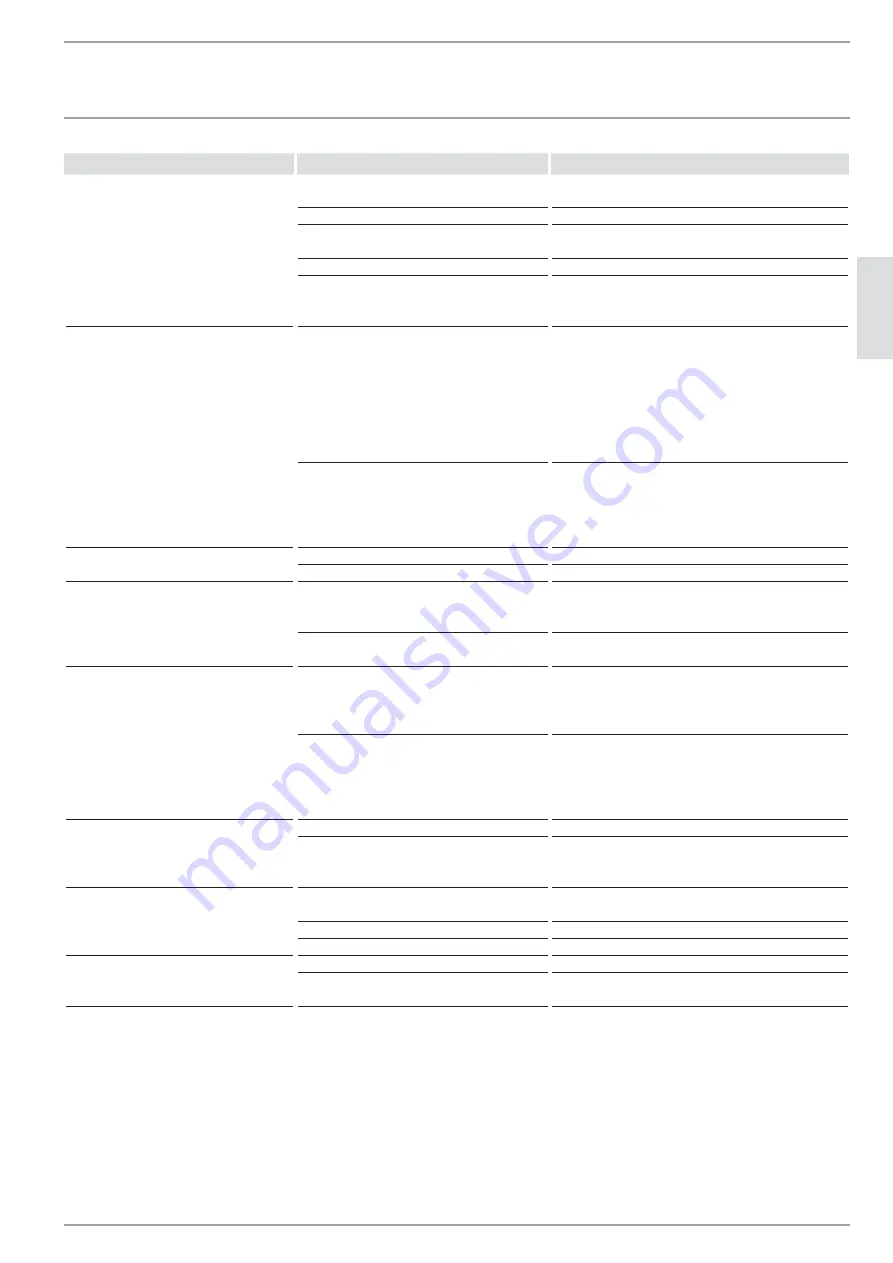
qqqĪZ`.<é<`VHCĪHB
ZH<ŝŌTVB.eBŗÑ
EN
GL
ISH
.CZ`<<`.HC
`VHe<Z+HH`.C&
%|şùŒ
|şń¼
V¼ă¼®ź
The pump starts and switches itself off again
shortly afterwards. This repeats a few times
until the system runs correctly. The same
happens in the evening.
There is still too little insolation to heat up the
entire pipework.
Check for faults again when there is strong insolation.
The flow rate is too high (the pump is set too high). Reduce the output stage of the pump.
The switching temperature differential of the
controller is set too low.
Increase the switching temperature differential on
the controller.
The pipework is not fully insulated.
Insulate all pipes.
The cylinder and collector sensors are
interchanged. (The problem occurs after
commissioning).
Connect the temperature sensors to the correct
sensor terminals (see the control unit installation and
operating instructions).
The pressure gauge indicates a drop in
pressure.
A pressure drop shortly after the system is filled
is quite normal, as air is still escaping from the
system. A pressure drop later on can be caused
by an air lock that has shifted. In addition during
normal operation, the pressure fluctuates by 0.02-
0.03 MPa depending on the system temperature.
If the pressure drops continuously, the system is
leaking somewhere.
Is the automatic air vent valve closed?
Check the threaded fittings, glands on shut-off valves and
threaded connections. Check the soldered joints.
Check the pre-charge pressure of the expension vessel and
ensure the diaphragm is not leaking.
Fluid loss as a result of opening the safety
valve, because the expansion vessel is not large
enough,or it is depressurised or faulty. Collector
damage (leaking) and frost damage through
insufficient frost protection.
Check the vessel size. Check the antifreeze level and the
pH value.
The pump runs noisily.
Air in the pump.
Vent the pump.
Inadequate system pressure.
Increase the system pressure.
The system runs noisily. This is normal in
the first few days after filling. There are two
possible causes if this occurs later:
The system pressure is too low. The pump draws in
air via the air vent valve.
Check whether the selected expansion vessel is large enough.
Check the pre-charge pressure of the expansion vessel.
Increase the system pressure.
The pump rate is too high.
Change to a lower pump rate and check the flow rate at the
flow meter with balancing valve.
The cylinder cools down over night. After
the pump has stopped, the flow and return
operate at different temperatures. At night the
collector temperature is higher than the out-
side temperature.
The gravity brake does not close.
Check the position of the adjusting screw. Check the gravity
brake for leaks. Has swarf become jammed or are there dirt
particles on the sealing surface?
Single pipe circulation for short pipework with low
pressure drop.
Change the line routing. Never connect the solar heat
exchanger directly but draw the supply lines first in a U
downwards. The siphon assists the gravity brake. If required,
install a two-way valve that is switched simultaneously with
the pump.
Reheating does not work. The boiler runs for
a short while, stops and starts again. This
repeats frequently, until the cylinder has
reached its set temperature.
There is air in the reheat indirect coil.
Vent the reheat indirect coil.
The indirect coil surface area is too small.
Compare the details supplied by the boiler manufacturer
and those of the cylinder manufacturer. The problem may be
resolved by selecting a higher flow temperature at the boiler.
The cylinder cools down excessively.
The insulation is faulty or incorrectly fitted.
Check whether the insulation is intact. Insulate the cylinder
connections.
Incorrect setting of the control unit for reheating.
Check the setting on the boiler control unit.
DHW circulation runs too frequently and/or at night. Check the switching times and the interval operation.
The pump does not switch off.
Sensor faulty or incorrectly positioned.
Check the sensor position, installation and curves.
The control unit is faulty.
Note: The variable speed pump does not stop immediately
but only after it reaches its lowest speed.

